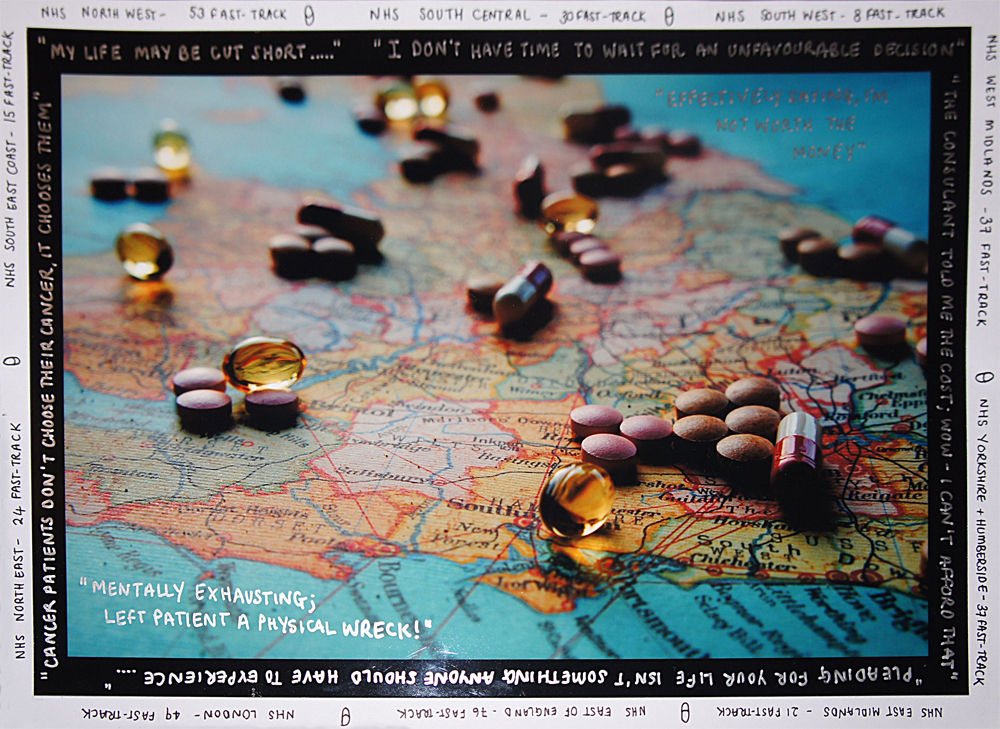Postcodes: are they a prescribing destiny?
I created an artwork to reflect the variable distribution of fast-track funding available for cancer treatment in England. The image depicts a section of Southern England with randomly scattered medications. As the geographical distance from the eye increases the medications begin to appear hazy. This is intended to portray that treatment may be less obtainable from an alternative strategic health authority. To indicate the geographical disparity, I have surrounded the image with the figures depicting the number of treatments available on the fast-track list depending on location.
Many patients report that the decision to deny treatment based on cost is effectively saying that I’m not worth it and that the process of appealing a decision is mentally exhausting, leaving the patient a physical wreck. Whilst patients are concerned with prolonging life, they place a greater value on improving the quality of their life. Many doctors have found the discussion with patients regarding exceptional funding very difficult, as for many patients, the option to top-up their treatment privately is not feasible. Unsurprisingly, the impact of knowing about a potentially unobtainable treatment often leaves the patient feeling that their life may be cut short due to failures in the NHS system.
I believe that this image visually illustrates the level of inequality of prescribing that exists across England. To reflect the emotions felt by patients involved in CDF funding, I have included some quotes sourced from the Macmillan Cancer Support and also from a patient I was fortunate to meet (with full permission).

0 Comments